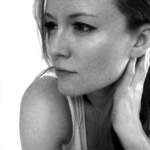A song/story about a CANNON BALL (specific object!) and being the last splash 🙂
Welcome back!
In this lesson, we keep exploring how looking closely produces art, and is an art in and of itself. We’ve looked inside our selves (body/breath), outside (the streets, outside world). This week I want to think about the OBJECTS we might be looking at. I argue that each object/thing, offers up a world. The more we can get to know OUR objects, and listen to them and stay true to them, the more unique and true our writing will be.
For example, I for one have learned that if you want to really get to know a character in a scene, describe SPECIFIC objects in his or her room. If you are stuck on something to write, look around at your own objects, study them, think about why they carry importance, what stories they tell.
OBJECTS:
Poet William Carlos Williams wrote, “No ideas but in things.”
Our writing is not only made up of THINGS to build vision, setting, meaning, but really objects can open up a whole world for us. Looking at one object can evoke feelings, memories….placing an object in a story can anchor it.
And, eventually, the story itself is an object. The sentences are objects. Words are objects. We build and build.
[youtube http://www.youtube.com/watch?v=6PqRhDdeKDA]
*so much depends on our objects
Reading Assignment
The Red Wheelbarrow by WCW & essay, a celebration of LOOKING CLOSELY, he almost stacks his images in a poem made of one line, conjuring up a world (this Modernist poem is not for everyone, but is a great example of IMAGE IMAGE OBJECT OBJECT)
The Wikipedia Page on the Red Wheelbarrow (may we all have Wikipedia pages about a poem someday 🙂
Pet Milk by Stuart Dybek, a story which the object of condensed milk is important (perhaps the whole story swirls out from it)
*in Pet Milk, an ordinary object works as a TRIGGER to a whole world of memory
Writing Assignment
Sit for a moment, pen and computer tucked away, and think about your THINGS.
What objects hold importance for you?
Then, grab the pen or laptop and make a list.
After, choose one object and use it as the central object in a new piece of writing. You may find that one object works to attract other objects. You might find your one object opens up a whole setting (for example, if your object is COW, a farm might be born or a slaughterhouse, if your object is BELL, a school band, a teacher’s desk, a monastery)
Write either a poem, story, or essay, by LISTENING to the words your OBJECT wants to tell.
 Sarah Herrington’s writing has appeared in the New York Times, San Francisco Chronicle, Writer’s Digest and she was named a Poet to Watch by Oprah Magazine. She is the author of a collection of poetry, Always Moving (Bowery Books, 2011) and several nonfiction books, including Om Schooled (Addriya Press, 2012), and Essential Yoga (Fair Winds Press, 2013). In addition to writing, she is an advocate for mindfulness and creativity and is the founder and lead facilitator of OM Schooled Teacher Trainings. Sarah is a graduate of New York University’s English and Creative Writing programs and holds an MFA in Creative Writing through Lesley University. She is a grateful member of the Bowery Poetry Club community and has worked for Gotham Writers’ Workshop and Girls Write Now. She divides her time between New York and California.
Sarah Herrington’s writing has appeared in the New York Times, San Francisco Chronicle, Writer’s Digest and she was named a Poet to Watch by Oprah Magazine. She is the author of a collection of poetry, Always Moving (Bowery Books, 2011) and several nonfiction books, including Om Schooled (Addriya Press, 2012), and Essential Yoga (Fair Winds Press, 2013). In addition to writing, she is an advocate for mindfulness and creativity and is the founder and lead facilitator of OM Schooled Teacher Trainings. Sarah is a graduate of New York University’s English and Creative Writing programs and holds an MFA in Creative Writing through Lesley University. She is a grateful member of the Bowery Poetry Club community and has worked for Gotham Writers’ Workshop and Girls Write Now. She divides her time between New York and California.
